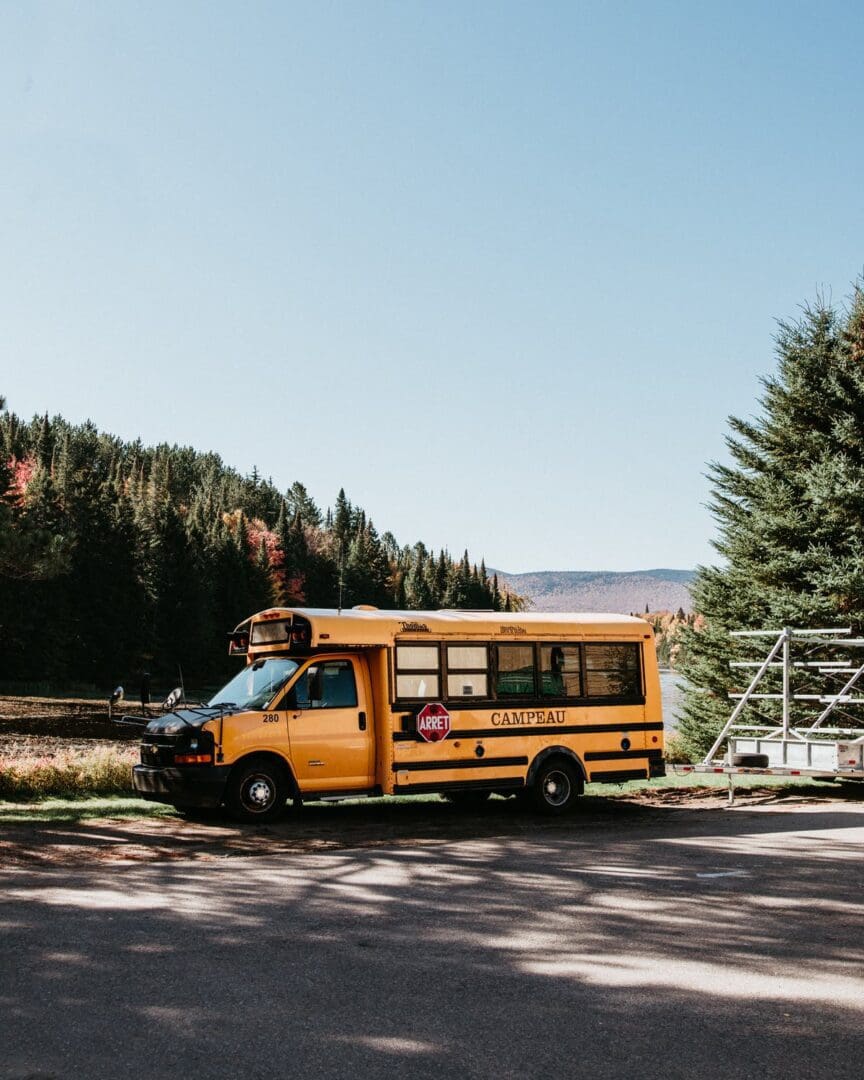
Why is CeraTex Ceramic Fiber Paper Being Used in Bus and Van Conversions?
Bus/Van Conversions
If your aspiration or goal is to explore nearby or faraway countryside, you may have considered doing so with an RV. Recreational vehicles come in various sizes, anywhere from small vans to travelling tour buses. But now, many outdoor enthusiasts are embarking on an “adventure” before their actually travelling adventures, by converting old buses or vans into mobile homes.
Van/Bus-life is a growing movement
Those pursuing this passion of old van and bus conversions are choosing the Van-life or Bus-life (a school bus conversion is called a Skoolie), and this way of life is growing in popularity for a number of reasons:
- Converting a used vehicle into a fully customized RV is typically cheaper than buying an equivalent RV brand new.
- Van/bus-lifers perform their own customizations to their new mobile homes, which has a very strong appeal to those who are creative, love to build things, and enjoy the challenges of such a project. Also, if you value recycling, performing a conversion on a van or bus headed to the scrapyard is a very gratifying experience.
- But, possibly the biggest reason why this movement has become so popular is the internet. Current van/bus-lifers are posting the successes and failures of their conversions, providing valuable information to aspiring adventurers ready to embark upon this journey of creating their own, customized mobile home.
Basic steps involved in a van/bus conversion
This journey begins with the obvious, acquiring a bus or van. The vehicle doesn’t have to be old, but some of the most interesting conversions shared on the internet are done on vehicles almost ready for the scrapyard.
The next steps may not be obvious. Van and Bus-lifers must resolve title, insurance, and registration issues. This may or may not be difficult depending upon where you live. Once the paperwork for your vehicle is in order, the construction process begins, with demolition. The majority (or entirety) of the interior of the vehicle must be removed in order to prepare for the conversion.
Next, the conversion begins! The following things are addressed during the rebuild:
- Layout for plumbing, power lines, gas lines, ventilation
- Cutting holes (for the items listed above)
- Wiring
- Installing ventilation and energy systems
- Insulation and flooring
- Framing side walls and ceiling
- Framing cabinets (off-ground)
- Framing benches, beds, cabinets, etc. (on-ground)
- Plumbing
- Finish work
The list above is a rough (and possibly misordered) checklist of items for a van/bus conversion. Many details are omitted and some items probably left off. This article focuses on one subtle, but important part of the conversion, the insulation.
Why is insulation important?
Taking a road trip in a well equipped RV is ideal because it provides all the necessities and comforts of home while exploring the great outdoors. Bus/van conversions have become increasing popular because adventurers can now customize their vehicles to their own specific comforts. The answer to the question, “Why is insulation important?”, is comfort. Proper insulation will contain heat and at the same time protect against it, in extreme temperature environments where home has become a much smaller, more intimate space.
There are many different types of insulation materials available for use in van /bus conversions, like fiberglass, rock wool, sheep’s wool, foam board, spray foam, synthetics, insulated paint, and reflective barriers. The ideal insulation used for conversions will be:
- Non-toxic
- Vibration resistant
- Thermal insulator
- Moisture tolerant or resistant
CeraTex Ceramic Fiber Paper
Some established bus/van-lifers are choosing to use CeraTex ceramic fiber paper for their insulation needs, but why? Ceramic fiber paper was originally designed for use as insulation, lining, and gasket material for high temperature equipment (i.e. kilns, ovens, stoves, etc…). It’s also used in aerospace and high temperature electrical insulation. It’s used as a separator for ceramic and glass melting applications, and for high temperature filtration.
Based on the applications listed above it is clear to see why CeraTex paper is unique, and why van/bus-lifers are experimenting with it as an insulation choice for their projects. It is flame and spark resistant, can tolerant working temperatures up to 2300 degrees F, has low thermal conductivity and heat storage, is thermal shock resistant, and corrosion resistant to most chemicals. But insulation for these conversions don’t need to withstand this much heat, so why is it being used?
The Answer
One of the main reasons CeraTex paper is appealing to converters of buses and vans as an insulation material is it’s compact thickness (thinness). CeraTex paper comes in thickness ranging from 1/32 of an inch to 1/4 inch, which allows for insulation of areas with very limited space. During installation gloves and protective clothing are recommended but once installed it is non-toxic (and not dust-producing). It is malleable and easy to handle.
It’s properties as a thermal insulator are impressive at high temperatures, but R-values for this product at the temperature range of van and bus cabins are not currently listed since known thermal conductivity values for CeraTex paper only range from 500 degrees F to 2000 degrees F. We are working on it. Also, CeraTex paper is not waterproof due to its porosity, but it will not be damaged by water, dries quickly, and will not harbor mold growth.
Again, if you are considering a van/bus-life there are a plethora of videos and articles covering all aspects from how to get started, to construction of cabinets, to setting up power systems, and much more. Several videos and articles specifically focus on insulation, since it is such an important concern. There are many types of good insulation materials available for your project, but if you must insulate an area limited by space please consider using CeraTex ceramic fiber paper.
